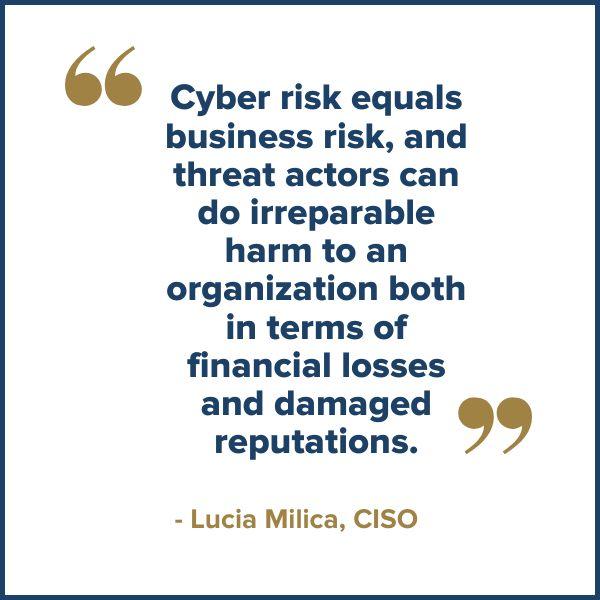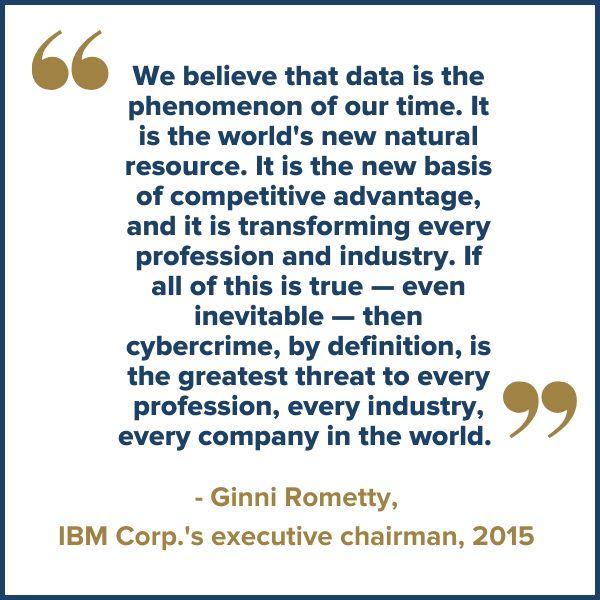
But as an adult, you can take the anger out of the phrase to question
who is the IT decision-maker at your organization.
The Power Play
Who is the boss of making strategic IT decisions in your organization? The CEO? The CIO? The CFO? Where does the CISO fit into the process? Do you even have a strategy?
While the C-Suite is responsible for making high-risk decisions about capital investments, security, acquisitions, and compliance policies, they do not work in a bubble, and their decisions impact the entire enterprise.
Who is managing IT risk when cyberattacks are growing more destructive and debilitating? Who makes decisions about IT operations, talent distribution, and partner and vendor selections? Every organizational decision should use a cost-benefit analysis to ensure the costs and operational risks fall within the organization’s risk profile.
Risk-averse decisions can directly affect the value returned in the long term. But knowing your risk tolerance can lead to better decisions that can create long-term gains to realize growth projections. Should the responsibility of making critical infrastructure decisions fall solely on one person? Who doesn’t want someone to blame when a decision turns out to be detrimental to your firm?
Value-driven security executives need to look at the business and reshape the decision-making
framework to distribute responsibility across several leadership roles.
Gartner reports that “distributed decisions” is trending in the C-suite. Decision-making is less risky when guided by decentralized intelligence and the experience of pooled resources. Plus, you can avoid vendor favoritism, nepotism, and other factors that narrow the selection field for IT support and cybersecurity when you listen to a broader voice.
Distributed Decisions
Skepticism & distrust in the leadership's decision-making strategy undermines organizational dynamics and can lead to decision dysphoria. Prolonged indecision often results in missed business opportunities and frustrated end users. When there is turmoil at the top, it
will trickle down the organization and impact productivity. Instead of fighting
about who is the boss and which role holds the most significant power, a distributed decision-making model tends to unify divided thought leaders.
Executive teams must distribute decision-making capabilities across roles to benefit from a broad thought leadership base. When an organization can define processes, promote organizational culture, drive competitive spirit, and create a unified vision, the organization is more stable and focused. Give your top talent a voice and the confidence to participate in strategic decision-making.
 |
Because IT is a business problem and a single cyberattack can destabilize the entire business, encourage cross-functional teams to meet, train, discuss, and act on goal and roadmap creation. Decision-making should follow an inclusive process where teams can resolve conflicts through discussion and consensus to foster organizational accountability for outcomes. Empowering senior management with a distributed decision-making model, where experienced voices are heard regardless of role or title, will lend legitimacy to the process, ensure transparency, and build trust between stakeholders.
IT decision-making can be complex and dynamic. But poor or short-sighted decisions impact the business and value propositions, increase costs, and diminish expected outcomes. As an executive, you need buy-in across the organization to foster greater agility, speed to execution, and implementation confidence. Distributed decision-makers show greater organizational alignment and commitment to IT security, functionality, usability, management, and maintenance because their key roles participated in the process.
Cybersecurity Mesh
Some organizations are blind to the value of IT security as a core business competency. But we live in a data economy. Cybersecurity is the primary risk in business. As your organization grows, so does your risk. Digital disruptions are not compartmentalized, and wrapping your organization in a cybersecurity mesh can keep the entire organization safe.
If you compel all employees to accept personal responsibility for cyber hygiene, they are less prone to fall for phishing attacks and Business Email Compromise attacks that cost the United States $43 billion in financial loss.
 |
TBC Provides Business and Security Consultations
If you are still determining your risk tolerance or are worried about making the right IT decisions, reach out to TBC, a Phoenix-based Managed Services Provider (MSP). TBC is a full-service MSP with business acumen earned over 26 years of IT implementation and service management experience. We can assess your risk profile, define your processes, create a cybersecurity strategy, and build an IT infrastructure roadmap to pave the way for your growth.
TBC begins with a Security Posture Assessment to understand the state of your existing IT environment. It includes a point-in-time examination of your infrastructure, security, configurations, network reliability, vulnerabilities, disaster preparedness, and server capacity. TBC will work with your organization to fortify your technology and processes and support your IT teams so you can reach security maturity.
TBC’s experienced IT infrastructure and business process implementers are valuable to your executive and IT teams. We know that adopting top-down decisions is challenging but critical to the
success of your organization. Let us help make your executive team more effective as informed decision-makers so that you can reduce tension and rally support behind the “distributed” decision-making bosses.
.png)


